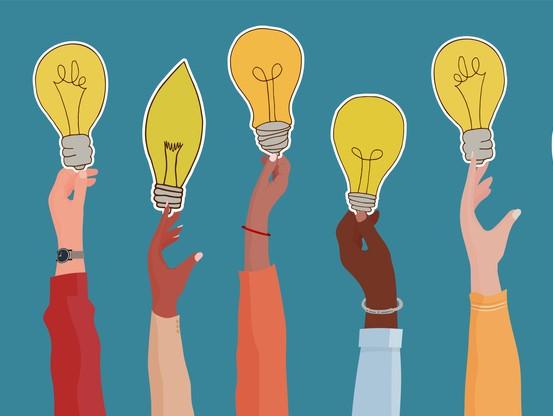
Primary sources as a tool for greater diversity
Primary sources can be used to diversify curricula and bring in marginalised voices. Jade G. Winn and Michaela Ullmann explain what library teams can do to support faculty and students in sourcing and assessing diverse materials

You may also like
Popular resources
Equity, diversity and inclusion (EDI) are essential values in creating a welcoming environment for every student, faculty member and employee, and are pivotal to improving college outcomes.
There are many ways higher education institutions can promote EDI. One way to enact meaningful change is to examine the pedagogical practices and curriculum resources in classrooms and degree programmes to ensure they include multiple perspectives. Are we promoting diverse voices? What perspectives are missing from our course content and discussions?
Campus leaders and hiring committees are asking that faculty not only become familiar with issues relating to EDI but actively integrate these values into their teaching. Students are increasingly aware of the need for this within the curriculum, and they expect to learn from diverse sources.
- Decolonising learning through access to primary sources
- Five reasons why primary sources should be used for teaching
- Decolonising your learning resources: representation matters
Integrating EDI into instruction
What does expanding EDI within the classroom look like? It could mean taking a hard look at course syllabi and required reading to include more sources from lesser-known voices. Faculty might need to revisit lectures and cast a critical eye on the viewpoints they present, reworking them to give students a more well-rounded picture. Faculty and students may need educating about the use of inclusive language, especially as this constantly evolves. At the University of Southern California, for instance, we have created a living vocabulary document that is continually updated as new terminology emerges.
Academic librarians are in a unique position to support this work. We can help students and faculty use sources that reflect diverse perspectives on complex historical events and topics. We can ensure that learning environments are sensitive to principles of diversity and inclusion, by critically analysing the design of our spaces to remove physical and mental barriers. We can foster discussions around bias and privilege reflected in our library collections.
However, we must be mindful of the need for faculty to have agency in what they choose to incorporate into their teaching. We can do this by offering the tools and support to help them assess their own curriculum and pedagogy.
Primary sources as a vehicle for expanding diversity and inclusion
Too often, the perspectives and experiences of under-represented people are excluded from biographies, scholarly journal articles, literary criticism and other secondary sources. As a result, these perspectives tend to be overlooked in required course reading.
Primary sources such as letters, journals, photographs, ephemera, government documents and oral histories hold great potential to fill in these gaps and ensure that students look at events and topics through multiple lenses.
The knowledge gained when using primary sources for instruction is twofold:
1) Students can be exposed to the perspectives and experiences from often marginalised voices;
2) It can help raise students’ awareness of how narrow or biased many secondary sources are.
As librarians, we can help make faculty aware of the rich opportunities that primary sources offer in broadening students’ perspectives. We should urge professors to look for sources beyond peer-reviewed scholarly journals. After all, simply checking this box in a database search will largely eliminate all primary sources from the search results.
Primary sources, and especially those that reflect the experiences and perspectives of marginalised voices, can be challenging to find. While many institutions are working to diversify their physical holdings of primary source materials, the physical materials in special collections departments in the US and elsewhere still predominantly represent Eurocentric and male perspectives.
Primary source databases can help but only if they are easily accessible and searchable. We would recommend that library teams create clear online guides to help faculty and students find the primary sources most relevant to their needs. We have done this with our LibGuides page, which directs faculty and students to places they might start their search for primary sources. So, if they are looking for historical materials, for example, this guide might direct them to Gale Primary Sources which offers digital archives of multidisciplinary historic documents. Or it might guide them to the North American Women’s Letter and Diaries archive by Alexander Street, which provides students with access to more than 300 years of lived experience by women in North America.
Challenging accepted truths
Primary sources provide an unfiltered view of the past. They reveal the diverse nature of human experiences, values and attitudes, thus connecting students to different points of view in ways that textbooks and second-hand accounts cannot.
Integrating primary sources and primary source literacy instruction across the curriculum helps students challenge accepted “truths” or “norms” and become more skilled researchers. As students explore and examine these materials, they become the interpreters of evidence, learning invaluable critical thinking skills.
To help students navigate and analyse often-challenging materials, librarians can develop toolkits or guides to support the development of primary source literacy. Our teaching toolkit for primary source literacy instruction offers readings, tutorials and activities including a chapter defining primary sources and how to analyse them and another focused on archival “silences” and the neutrality of archives.
Primary sources play a key role in helping students understand how to look at things from multiple perspectives, and they are critical tools in bringing diversity and inclusion into classrooms – while enriching the learning experience for everyone.
Jade G. Winn is associate university librarian and Michaela Ullmann is exile studies librarian and instruction coordinator for special collections at the University of Southern California.
If you found this interesting and want advice and insight from academics and university staff delivered direct to your inbox each week, sign up for the THE Campus newsletter.



Comments (0)
or in order to add a comment